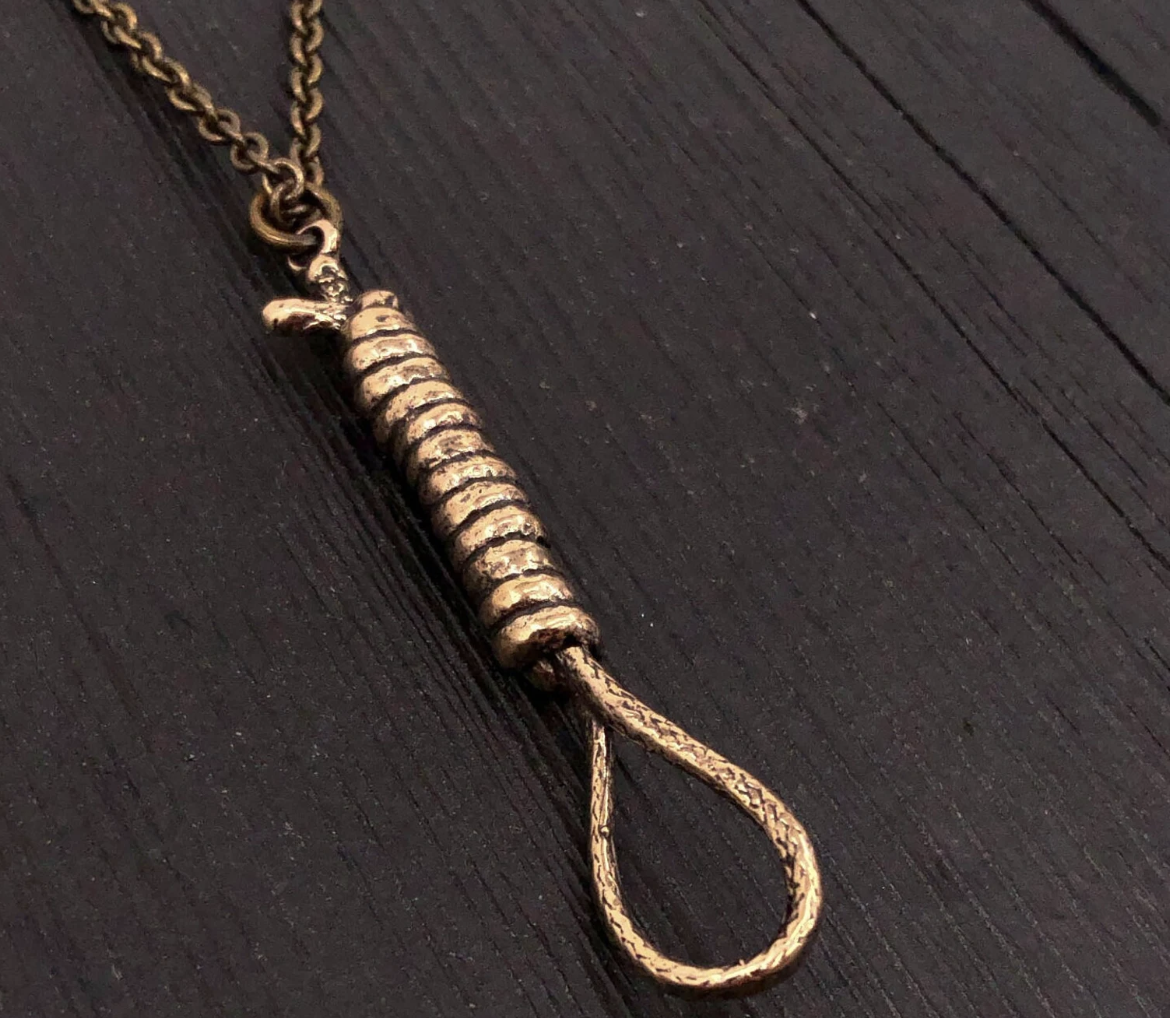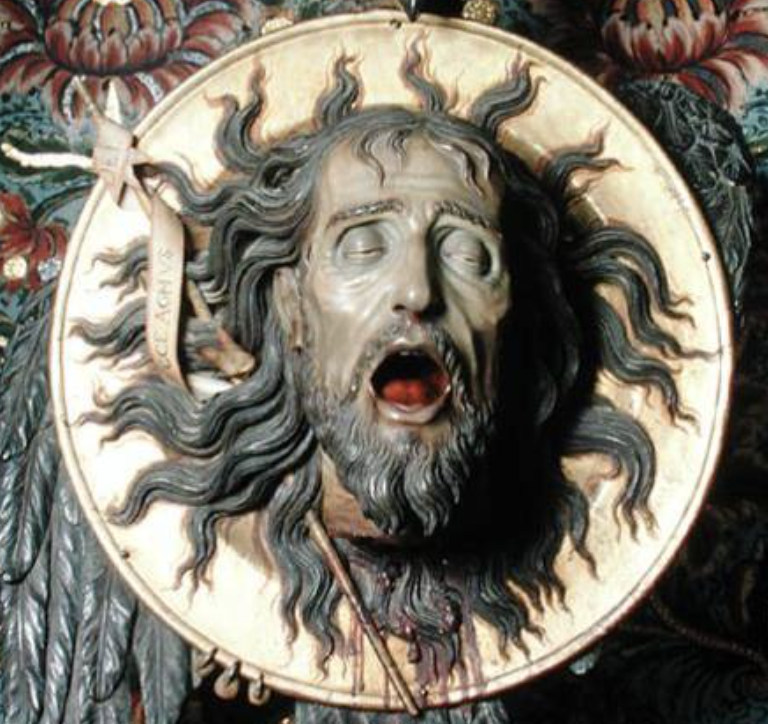Glorifying Human Sacrifice.
"After their return from Babylon, the practice of human sacrifice died out among Jews, but it survived as an ideal in one of its breakaway sects, which believed that God accepted the torture-sacrifice of an innocent man in exchange for not visiting a worse fate on the rest of humanity. The sect is called Christianity.”
― Steven Pinker, The Better Angels of Our Nature: Why Violence Has Declined
To my Christian family and friends:
Many Christians young and old love wearing a cross, or crucifix, around their neck to proclaim to the world their faith in their Lord Jesus Christ. Perhaps you, like they, find it comforting, reassuring; a reminder of the supreme sacrifice made and the promise of escape from Hell and eternal life holding hands with Jesus in Heaven.
The executioner's cross as a symbol is ubiquitous, seen on church steeples and sanctuaries, in cemeteries–even on national flags. The cross is used to effectively exorcise demons and to reliably ward off vampires. Or so they say.
Ironically, the crucifix is often prominently displayed as tatoos and worn as jewelry around the necks of gangsters, rappers, mafia and pedophile priests alike, presumably for divine protection from their enemies. (Good luck with that!)

Since its founding after the Civil War, the Ku Klux Klan continues to use the cross as a symbol of hatred against Jews and blacks–or any person not perfectly white in skin color. You know, like Jesus.

But what is this symbol, really? The cross represents a hideous, yet effective implement of torture and execution employed throughout the Roman Empire. As such, crucifixion was reserved for criminals of the worst kind.
Tradition has it that the cross was fashioned from a heavy wooden vertical post and horizontal beam, assembled in the shape of a lowercase “t”. The beam was designed to accommodate the outstretched arms of the convicted offender which were held in place by heavy spikes driven through the bones of either the wrists or hands. As well, the victim's feet were crossed and nailed to a small platform on the vertical post. The cross with its skewered victim was then erected upright for all to see. The sentenced criminal was left naked to bake in the sun, enduring days of anguish before expiring from dehydration, exhaustion and blood loss. Lovely.
However, modern archaeology, having examined the remains of victims of Roman crucifixion, tells a bit different story:
According to an article by Hershel Shanks appearing in Biblical Archaeology Review, “Death by crucifixion was the result of the manner in which the condemned man hung from the cross and not the traumatic injury caused by nailing. Hanging from the cross resulted in a painful process of asphyxiation, in which the two sets of muscles used for breathing, the intercostal [chest] muscles and the diaphragm, became progressively weakened. In time, the condemned man expired, due to the inability to continue breathing properly.”
Because of the scarcity of lumber, the Roman cross had to be reusable. Some archaeologists believe it was probably shaped like a the uppercase letter T with a reusable post topped with a removable beam. The condemned was strapped to the beam and forced to trudge through the streets to the execution site. The victim's arms straddled the top of the beam, wedged between the back and armpits, and were secured to either end of the beam with ropes. No need for nails. Besides, the weight of the hanging man's body could tear away the metacarpal bones from the nails.
While some believe that Jesus was crucified on a cross, others argue that he was actually put to death on a stake. This debate has been fueled by the Greek translation of the Bible, which refers to the cross as 'stauros'.
The apostle Paul also referred to the cross as 'stauros', leading many people to believe that Jesus did not die on a traditional Latin-style cross. However, it is important to note that stauros could also refer to any type of upright structure used for execution, including wooden stakes and gallows.
Furthermore, some historians have argued that the use of crosses as religious symbols predates Christianity and can be traced back to pagan cultures. In particular, they point out that Celtic crosses were used long before Jesus was born and may have been adopted by early Christians as an alternative way of representing their faith.
In my opinion, the mortise-and-tenon Latin-style cross as depicted in Christian imagery was probably an artist's interpretation, being more ‘romantic’ than a simple T shape. Besides, it probably wouldn't sound right to say 'Jesus died on the tee.' Cross, tee or stake; nailing or ropes, whatever method the result was the same: a slow, agonizing death for the condemned.
So why is the cross, this hideous symbol of human torture, displayed so proudly by the faithful? How did we become so hardened, so numb that we do not see the perverted irony of this practice?
Let’s take a moment to put this in perspective. If Jesus were to have died by some other popular Roman method such as by hanging by the neck from a stauros (gallows) would you, as a Christian, happily wear a little noose or gallows around your neck?

If Jesus had been decapitated as was his cousin, John (the baptizer), would you proudly display a scimitar or an executioner’s axe in your church? Would you be ok with Jesus' severed head being displayed on a silver platter in the same manner as his bloody body is displayed hanging from the cross in so many churches?

And what if Jesus had been drawn and quartered? Or disemboweled? Or burned at the stake as was so popular with Jesus lovers to punish non-believers during the Inquisition? Can you visualize little dashboard figurines with Jesus’ charred body, face frozen with gaping mouth from his lungs being seared?
Let’s be intellectually honest and call Christianity what it really is: a cult of human sacrifice. It worships a jealous Bronze Age god who thought torturing and murdering an innocent man to “save” all mankind from his (God's) wrath was a great idea. Really? Could not your god have easily come up with a less barbaric, less gruesome way of forgiving his creation other than a blood sacrifice? After all, according to you, HE IS GOD!
So the next time you make the sign of the cross or latch a crucifix around a little child’s neck, just remember you are glorifying a grotesque device of human torture and death.
P.S. For those that doubt that Christianity’s roots are based on a cult of human sacrifice, just turn your Bible to 2 Samuel 21:4–14 where God happily ends a famine, but only when he receives a mass human sacrifice from the Gibeonites. Oh, and do not forget God’s request of Abraham. Sick.